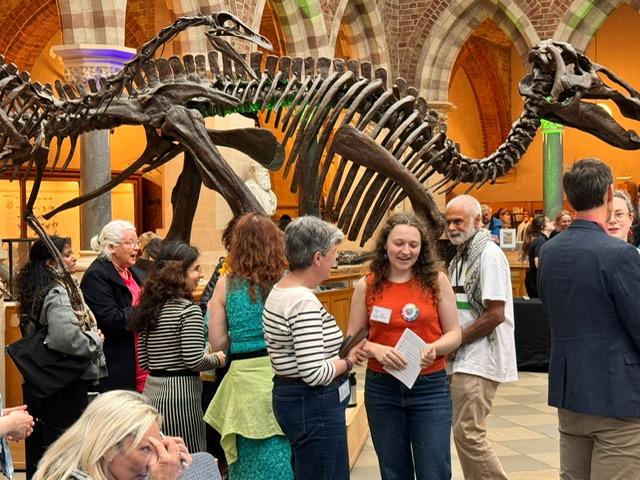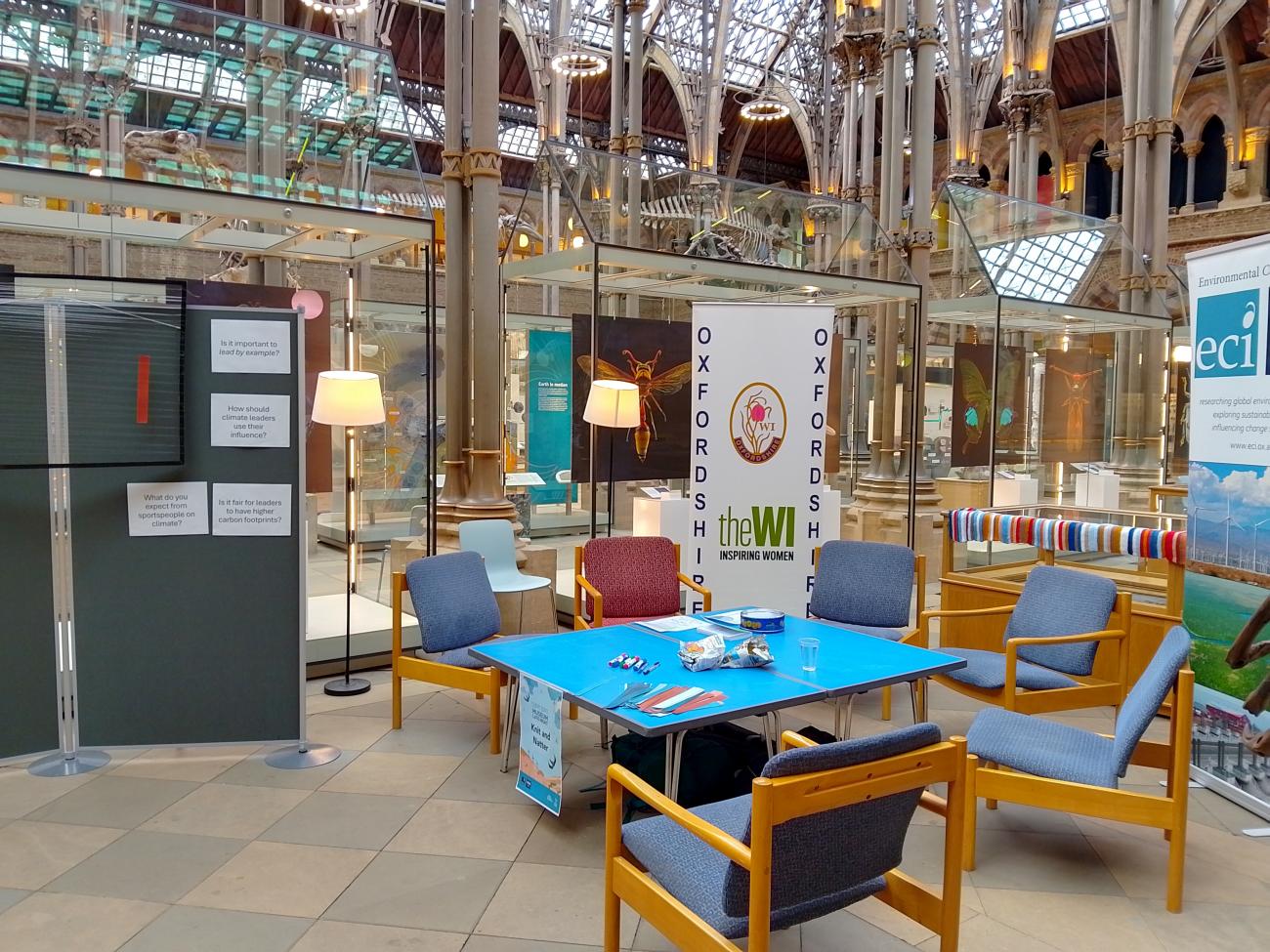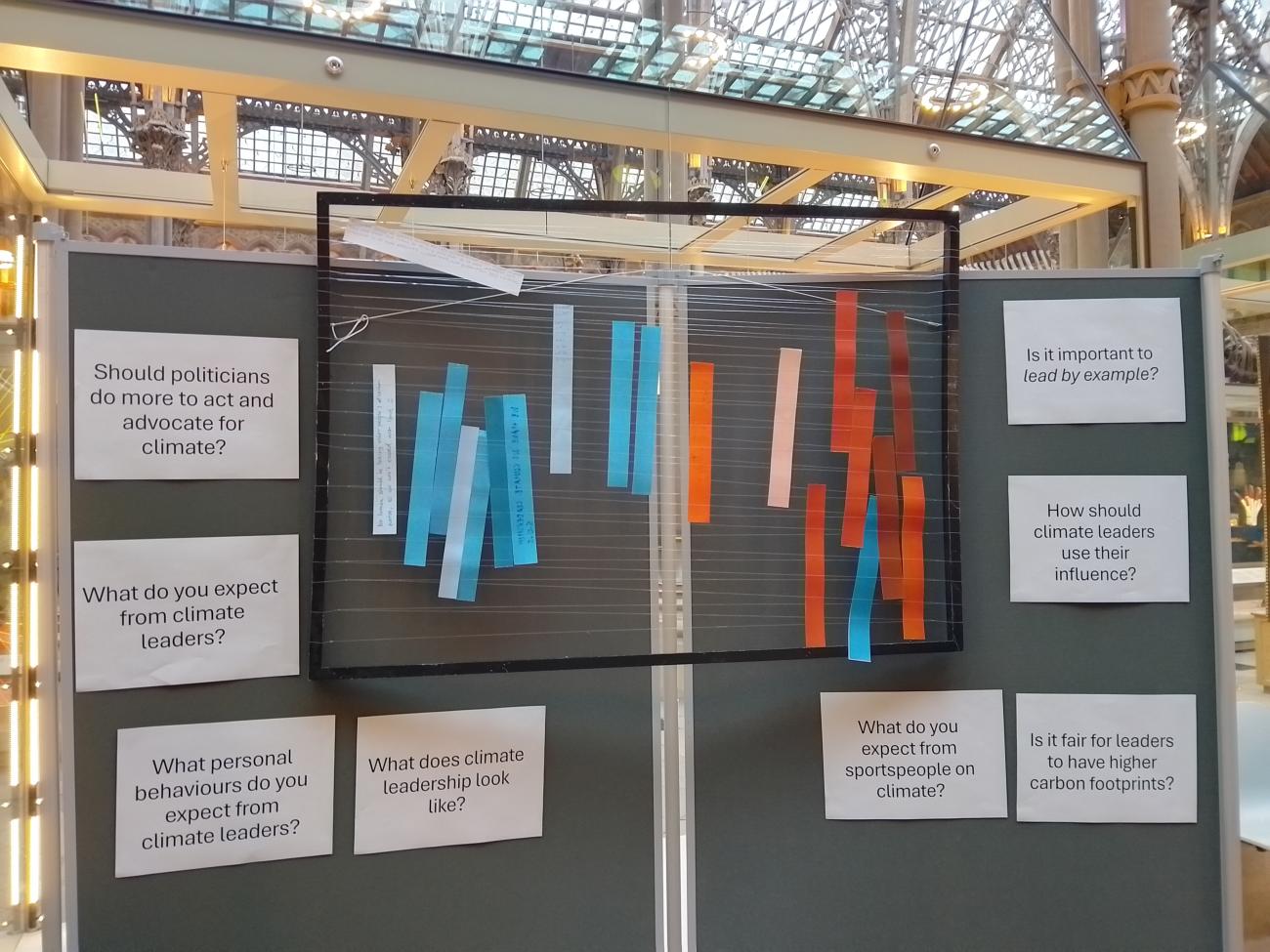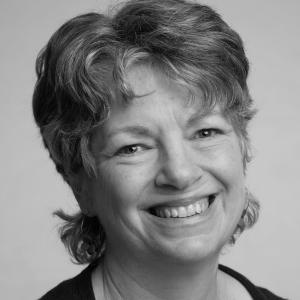What does it mean to be a climate leader—and who gets to decide? On a recent evening surrounded by ancient fossils and curious visitors at the Oxford University Museum of Natural History, two researchers from the ECI’s Energy programme set out to explore these questions in creative, collaborative ways.
Blending public engagement with craft and conversation, they joined forces with WI Climate Ambassador Sue Smith to encourage conversations about action, responsibility, and leadership in the face of the climate crisis. Dr Tina Fawcett, Senior Researcher and Associate Professor, and Dr Sam Hampton, Senior Researcher explain more.

Together with Sue Smith, from the Women’s Institute (WI), we had climate conversations with the public and sought views on climate leadership at the Oxford University Museum of Natural History on 6 June. This late night at the museum event featured activists, researchers, poets, and artists. Nearly 1,000 visitors took part in a range of activities. It was one of many local events in Oxfordshire, contributing to the Right Here Right Now Global Summit.
Sue is a WI Climate Ambassador, and she led ‘Ask a Capable Woman’ climate conversations. Some fascinating discussions were prompted with questions from the ‘Is it really green?’ book by Georgina Wilson Powell. Conversations ranged from the impact of sunscreen on the ocean ecology to energy saving options at home.
Our other activity focussed on exploring expectations around climate leadership. In addition to conversations, we asked visitors to write down their thoughts in response to a number of questions including:
- What does climate leadership look like?
- Is it fair for leaders to have higher carbon footprints?
- Is it important to lead by example?

Visitors shared their responses on strips of paper, whose colours matched those from the ‘climate stripes’ visualisation which shows how global average temperatures have risen over nearly two centuries. These were then woven into a paper tapestry. This complemented the Cropredy WI Climate Scarf - also on display and used as another conversation starter.
Greta Thunberg was the only climate leader identified by name, with concern about a current lack of leadership.
“Climate leadership looks like changemakers like Greta Thunberg leading by example. Doing as much as they can.”
“We have no climate leadership. S.O.S.”
“Politicians should be leading climate activists. Climate change is not rocket science. They have power and should be doing so much more.”
Views differed on whether it is fair for leaders to have high carbon footprints.
"Leaders can have higher carbon footprints – they can have net benefit.”
“Is it absolutely NOT okay for leaders, celebrities etc. to have higher carbon footprints. It’s unjust, disrespectful and an abuse of power. They should lead by example, not lead us into disaster.”
Leading by example was seen as important.
"There’s no alternative to leading by example. In any context, actually.”
“Leading by example is extremely important.”

Recent research shows that WI members already lead by example, encouraging others to adopt their low carbon behaviours. WI members tend to waste less food, adopt new technologies when it comes to heating houses and driving cars. They also repair, recycle and reuse more than the average population, but still need to work on relatively high levels of air travel. To find out more about local WI climate action you can contact Sue: climate@oxfordshirewi.co.uk
We will be exploring climate leadership further via a significant new research project, to be announced shortly.


